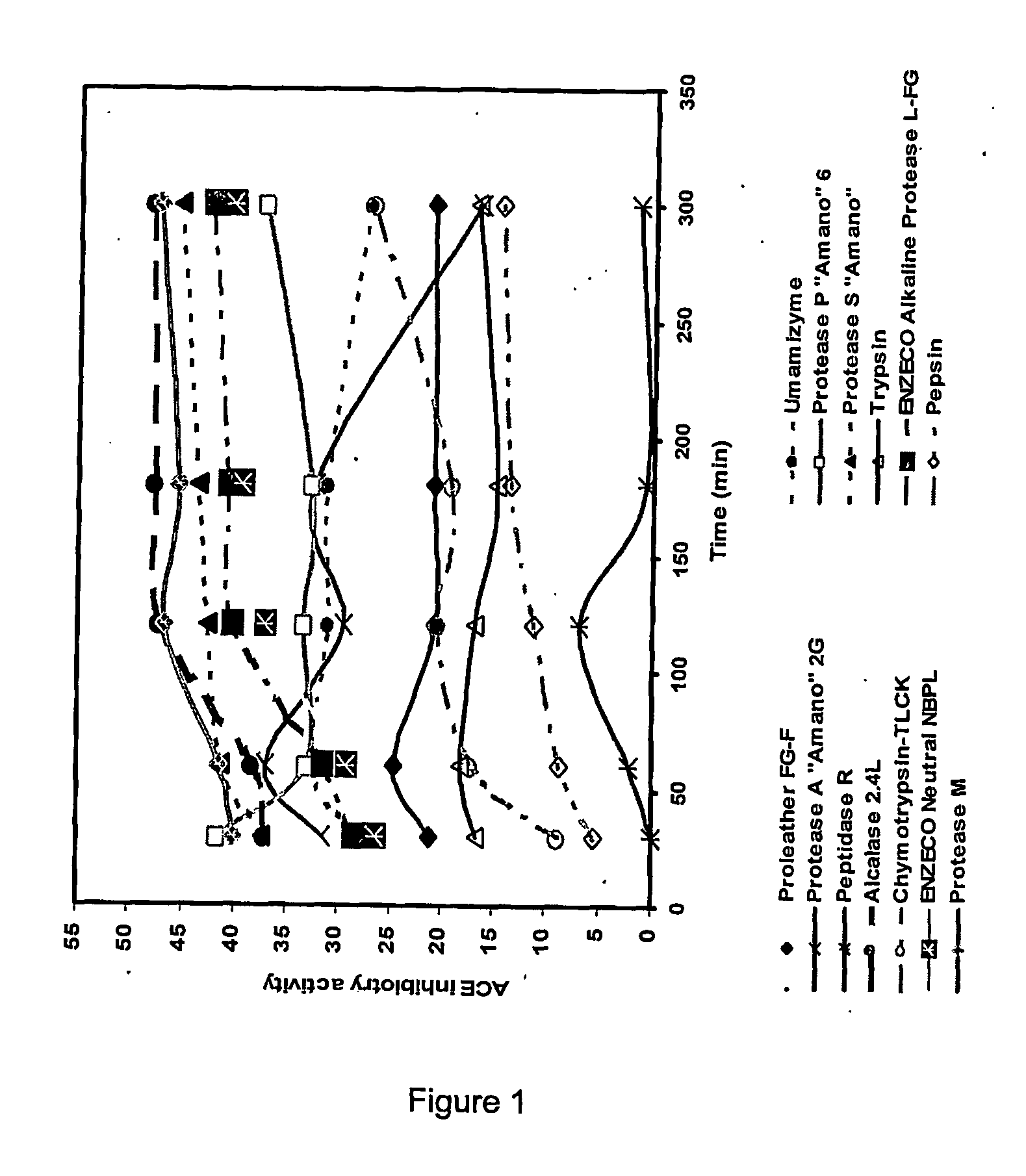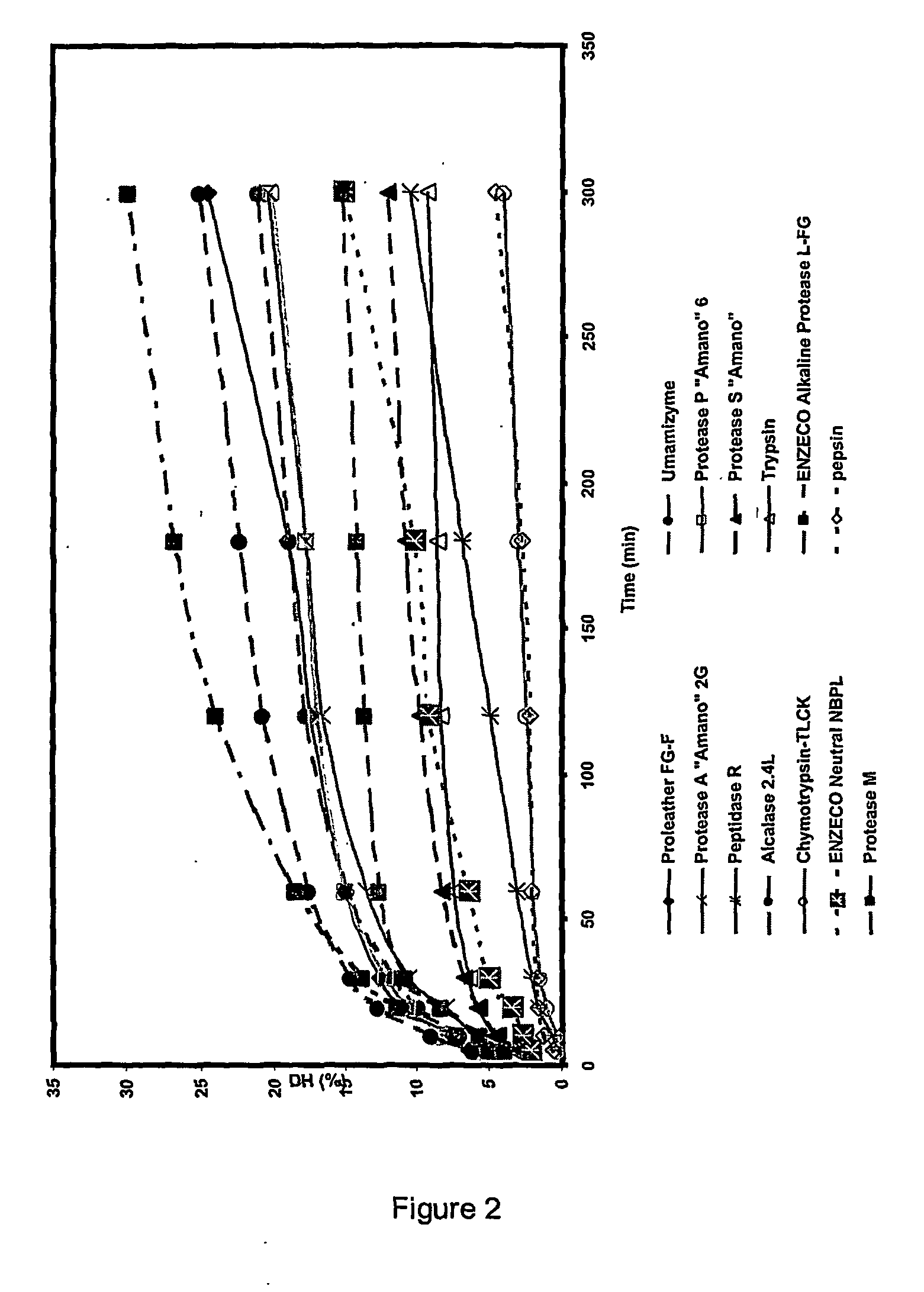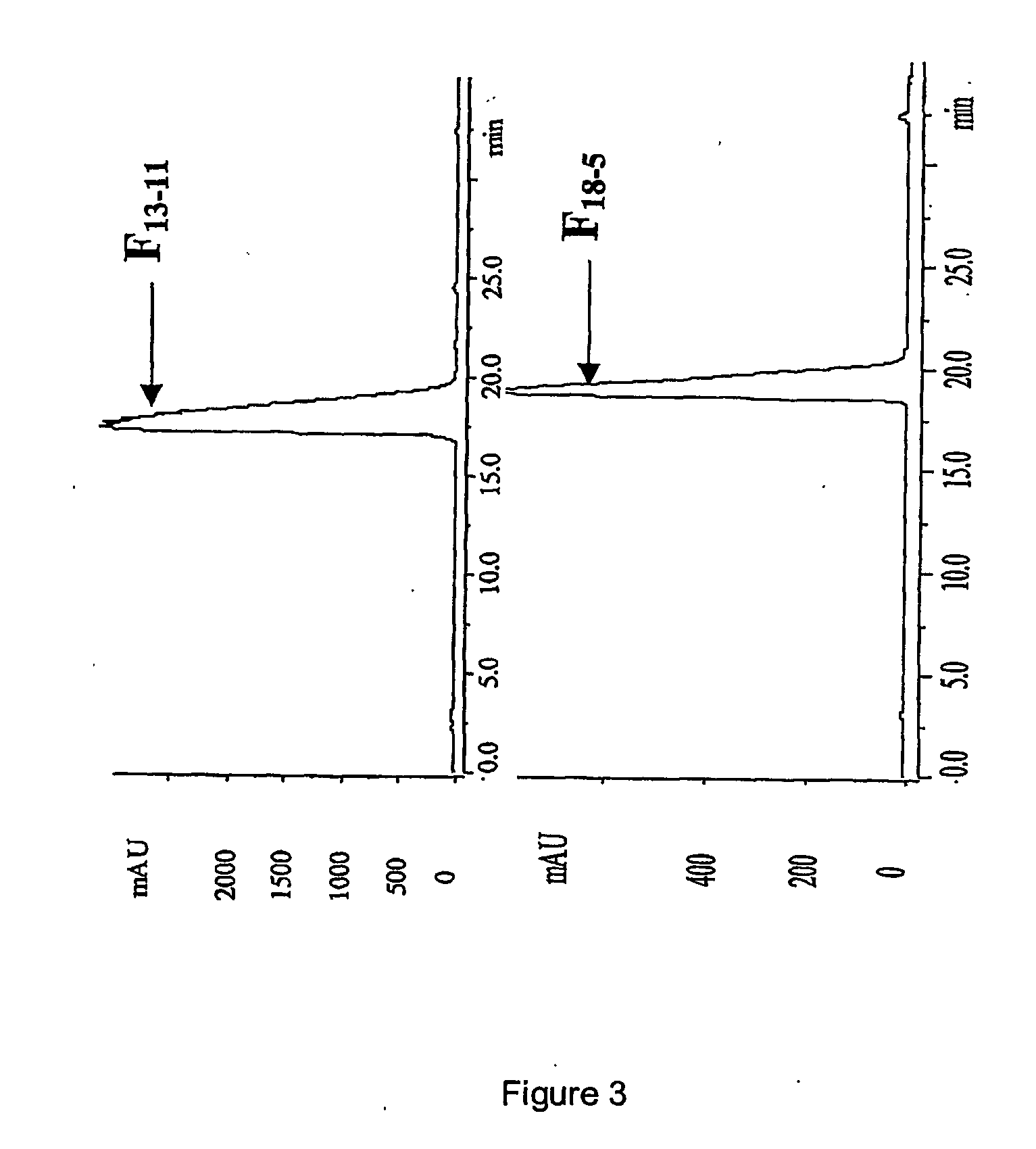Ace inhibitory peptides from plant materials
a technology plant materials, which is applied in the direction of dipeptide ingredients, tripeptide ingredients, plant ingredients, etc., can solve the problems of high blood pressure, high cost of products, and prolonged use of ace inhibitory peptides, so as to reduce the cost of process, and reduce the cost of products
- Summary
- Abstract
- Description
- Claims
- Application Information
AI Technical Summary
Benefits of technology
Problems solved by technology
Method used
Image
Examples
example 1
Enzymatic Screening for the Production of ACE Inhibitory Peptides (ACEIP) from Defatted Canola Meal
[0072] The reaction was performed in batches in a reaction vessel equipped with a stirrer, thermometer, and pH electrode. Solvent extracted expeller cake commercial canola meal (Canbra Foods, Lethbridge, Alberta, Canada), (31.16 g), ground to pass a 40 mesh screen (protein content: 40.1%), was mixed thoroughly using a magnetic stirrer with distilled water to form 250 ml of a 5% protein slurry. The proteolytic enzymes evaluated are listed in Table 2, along with their optimum pH and temperature conditions. The pH of the slurry was adjusted to the appropriate pH and temperature for the enzyme being tested. Enzyme (4%, w / w on the basis of protein content of slurry) was added to initiate the reaction. The pH of the reaction was maintained at a constant value by addition of either 0.5 N NaOH or 1 N HCl. The volumes of alkali were recorded at specific intervals for the calculation of degree ...
example 2
Preparation of Flaxseed Meal Enzymatic Hydrolysates
[0077] The reaction was performed in batches in a reaction vessel as in Example 1. Solvent extracted expeller cake commercial flaxseed meal (CanAmera Foods, Atton, Manitoba, Alberta) (50 g), ground to pass a 40 mesh screen (protein content: 33.9%), was mixed thoroughly using a magnetic stirrer with distilled water into a 750 ml slurry. The pH of the slurry was adjusted to 8.0 and temperature to 60° C. for Alcalase 2.4 enzyme hydrolysis. The enzyme was added at a ratio of 4% (w / w, on the basis of protein content of slurry). During the reaction, the pH of the slurry was maintained at a constant value by addition of 0.5 N NaOH. The enzyme was inactivated by adjusting the pH to around 4.0 with 6 N HCl. Unhydrolysed proteins, large peptides and insoluble material were removed by centrifugation at 6,000′ g for 25 min. The residue was resuspended in 250 ml water and centrifuged under the same conditions. The resulting clear supernatants w...
example 3
Production of ACE Inhibitory Peptides from Soy Flour.
[0079] Nutrisoy 7B soy flour (87 g, Archer Daniels Midland CO., Decatur, Ill.) was mixed thoroughly using a magnetic stirrer with distilled water into 600 ml slurry. The slurry was adjusted to pH 8.0 and 60° C. for enzymatic hydrolysis by Acalase 2.4 as in Example 2. Enzyme was added at the ratio of 4% (w / w, on the basis of protein content of slurry). During the reaction, the pH of the slurry was maintained constant with 0.5 N NaOH. The enzyme was inactivated by adjusting the pH to around 4.0 with 6 N HCl. Unhydrolysed proteins and large peptides as well as other polymers were removed by centrifugation at 6,000×g for 25 min. The residue was resuspended in 300 ml water and centrifuged using the same conditions. The resulting clear supernatants were then combined and freeze dried and stored at −5° C. till further analysis. The hydrolysate produced by Alcalase 2.4 had an ACE inhibitory IC50 of 126.3 μg powder / ml with a product yield...
PUM
| Property | Measurement | Unit |
|---|---|---|
| Fraction | aaaaa | aaaaa |
| Fraction | aaaaa | aaaaa |
| Fraction | aaaaa | aaaaa |
Abstract
Description
Claims
Application Information
 Login to View More
Login to View More - R&D
- Intellectual Property
- Life Sciences
- Materials
- Tech Scout
- Unparalleled Data Quality
- Higher Quality Content
- 60% Fewer Hallucinations
Browse by: Latest US Patents, China's latest patents, Technical Efficacy Thesaurus, Application Domain, Technology Topic, Popular Technical Reports.
© 2025 PatSnap. All rights reserved.Legal|Privacy policy|Modern Slavery Act Transparency Statement|Sitemap|About US| Contact US: help@patsnap.com



